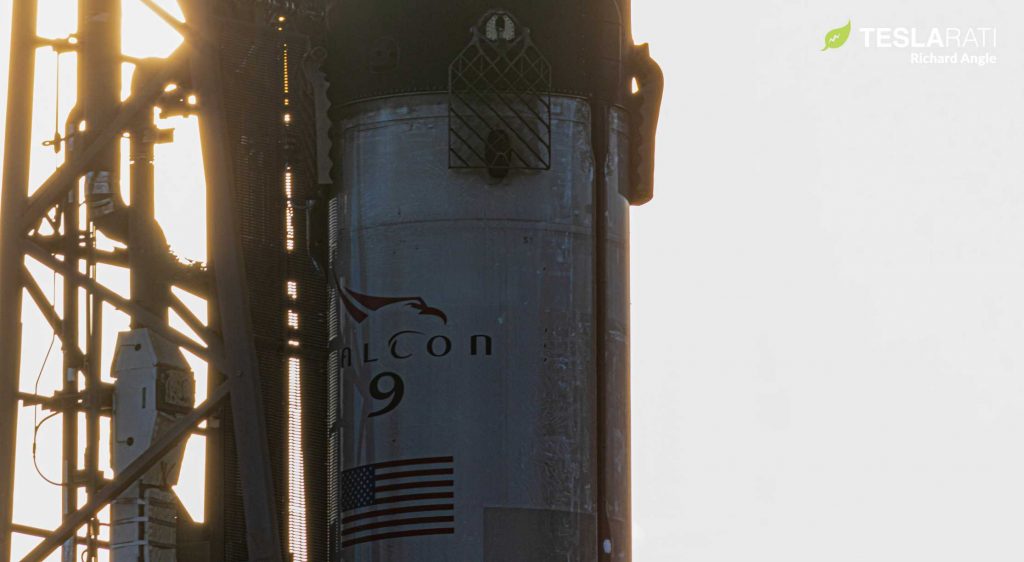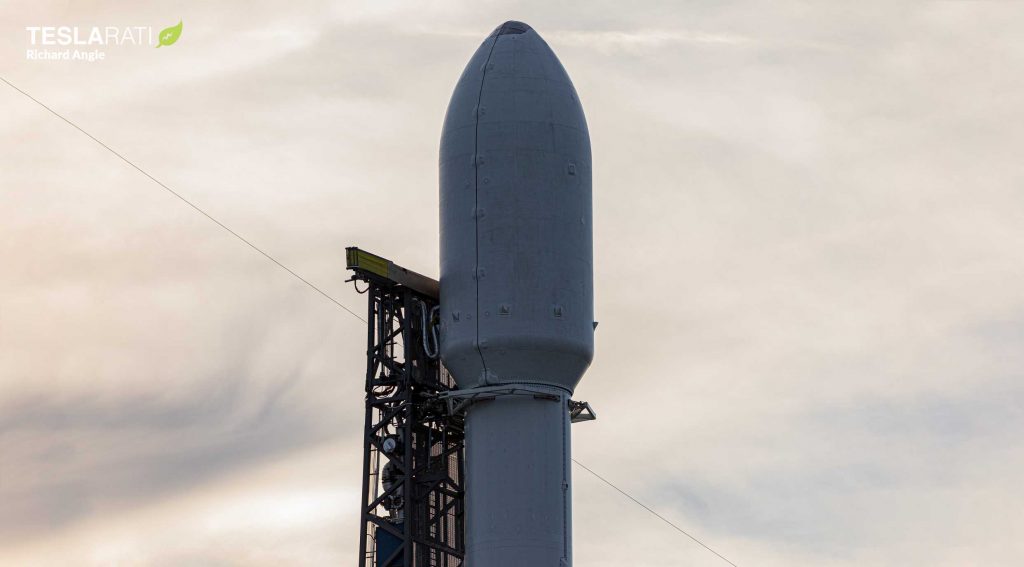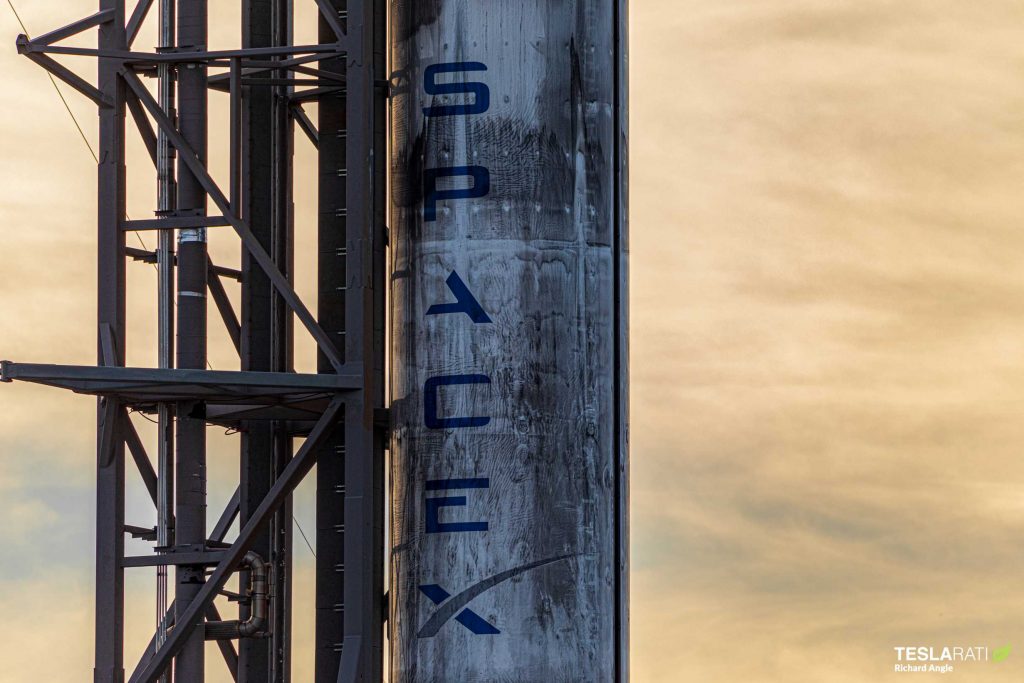SpaceX has delayed its latest Starlink launch once more after high winds forced the company to recycle an attempt originally planned for January 27th, setting up SpaceX’s Elon Musk for a Starlink launch and Tesla earnings report on the same day.
Flight-proven Falcon 9 booster B1051 is currently vertical at Cape Canaveral Air Force Station (CCAFS) Launch Complex 40 (LC-40) and has been for more than a week. Perched atop an expendable upper stage attached to the top of the booster, SpaceX’s third batch of 60 upgraded Starlink v1.0 satellites are loaded inside the rocket’s airtight payload fairing, patiently awaiting a launch that’s now been delayed a full 9 days by winter weather both in Cape Canaveral and off the Florida coast.
Most recently, bad sea conditions in the Atlantic Ocean forced SpaceX to delay Starlink V1 L3 an extra 24 hours from a January 28th backup window and the batch of communications satellites are now scheduled to launch no earlier than (NET) 9:09 am EST (14:09 UTC), January 29th. Set to unequivocally reaffirm SpaceX’s position as the owner of the world’s largest private satellite constellation, the mission – should it be a success – will mean that the company has launched its 240th flat-packed Starlink satellite. Additionally, Starlink L3 should feature a number of exciting Falcon 9 recovery events, potentially setting up more than 75% of the rocket’s value for reuse.
Earlier this morning, Teslarati’s own Simon Alvarez offered a glimpse of what to expect from Tesla’s Q4 2019 earnings report, scheduled for 3:30 PM PST (23:30 UTC), January 29th. In short, it looks like Tesla’s highly-anticipated Model Y crossover could find its way to customers much sooner than expected, while additional signs point to another strong quarterly performance that could send the company’s already meteoric stock even higher. As always, CEO Elon Musk is expected to be front and center on the teleconference, which is set to occur just nine hours after SpaceX’s latest 60-satellite Starlink launch.
For SpaceX, the new year has gotten off to a busy start, although Florida’s winter weather has done its best to hamper launch attempts. Beginning with the second launch of Starlink v1.0 satellites (Starlink V1 L2) on January 7th, that Falcon 9 mission was delayed from January 3rd by high seas in the Atlantic Ocean that would have made the booster’s planned drone ship landing extremely risky. In high seas, drone ship decks pitch and buck, creating major uncertainty as Falcon 9 is unable to account for the deck movement.

If the floating landing pad is at the peak or trough of large swells when Falcon 9 is scheduled to land, there is a good chance that the rocket could either hit the deck too hard or cut off its engines before landing, falling a distance equivalent to the height of the swell onto the drone ship. Either scenario would pose a serious risk of damaging or even outright destroying a landing Falcon booster, cutting short any future prospects of reuse.
Most recently, SpaceX performed Crew Dragon’s second-ever launch on a Falcon 9 rocket, intentionally triggering an in-flight abort (IFA) some 90 seconds after launch to test the spacecraft’s ability to keep astronauts safe in even a near-worst-case scenario. That particular launch was also delayed a number of days by high seas in the region the spacecraft was expected to splash down in, conditions that would have severely hampered critical recovery work.
Now a little over a week after Crew Dragon’s successful January 20th Falcon 9 launch, SpaceX’s third launch of the year has been delayed repeatedly by both weather in the recovery area and weather at the launch pad. Originally expected to launch as early as January 20th, a slight Crew Dragon launch delay pushed it to the 21st, where it was then delayed again by high seas to January 24th, and a third time to January 27th. On January 27th, SpaceX got just 40 minutes away from liftoff before it scrubbed the attempt due to high upper-level winds above the launch pad.


Finally, on January 28th, SpaceX announced that bad weather in the recovery area had forced it to skip a backup window scheduled later that day, slipping another 24 hours to 9:09 am EST on January 29th. With any luck, this will be the last in an unusually long series of weather-related delays for the Starlink mission. Aside from Falcon 9 B1051’s third launch and (hopefully) landing, Starlink V1 L3 will also mark the second time ever that twin Falcon fairing recovery ships Ms. Tree and Ms. Chief will attempt to simultaneously catch both halves of a payload fairing — more than worth the wait.
Tune in to SpaceX’s official webcast around 8:55 am EST (13:55 UTC) tomorrow (Wednesday, Jan 29) to watch the company’s third launch of 2020 live.
Check out Teslarati’s newsletters for prompt updates, on-the-ground perspectives, and unique glimpses of SpaceX’s rocket launch and recovery processes.

(adsbygoogle = window.adsbygoogle || []).push({});
<!–
–>
var disqus_shortname = «teslarati»;
var disqus_title = «SpaceX’s Elon Musk set for Starlink launch, Tesla earnings double-header»;
var disqus_url = «https://www.teslarati.com/spacex-elon-musk-starlink-launch-tesla-earnings/»;
var disqus_identifier = «teslarati-128164»;

